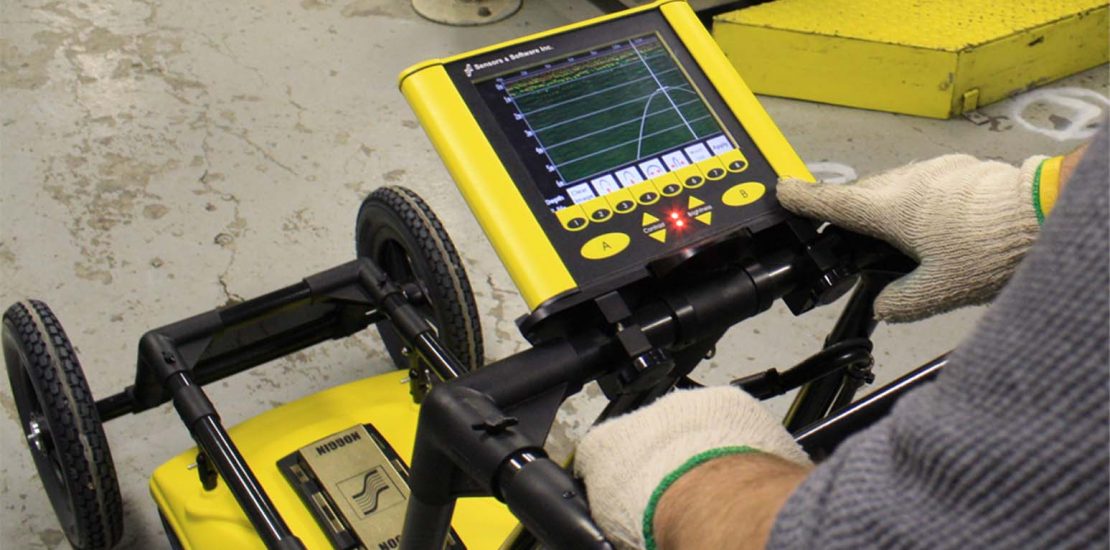Is Ground Penetrating Radar the Answer?

Ground Penetrating Radar System – Issues resulting from accidental damage to underground utilities continue to receive priority in the underground construction industry as initiatives to protect buried facilities gain momentum.
Data from a Common Ground Alliance document indicate that the primary cause of utility strikes is failure to accurately locate and mark buried pipe and cable.
Electronic locators remain the basic tool to find underground facilities, but they have limitations. Hand-held electronic receivers detect buried facilities via a signal. Generally, plastic pipes cannot be found unless they are equipped with tracer wire to carry a signal generated by the locator’s separate transmitter unit. Communications cable also must be energized for the locator to detect it. Signals from nearby power sources often can interfere with the locator’s accuracy.
Ground Penetrating Radar (GPR) offers an alternative.
GPR locators send a signal through the soil which bounces off objects and returns a signal to the unit’s receiver providing vertical and horizontal positions with a display of the object on the unit’s screen. Tracer wire is unnecessary. Most models are on wheels attached to handlebars similar to a lawn mower, and the operator pushes the device across the ground to locate and view a representation of what’s below.
However, GPR also has limits, the most important being that its performance is much less effective in dense soils, it has been estimated that about 60 percent of Australia is not suitable for achieving good results using GPR.
GPR is most effective in materials with low electrical conductivity, generally but not always coarse-grained soils like sands and gravels, hard rock (granite, marble, basalt, limestone, salt), concrete, asphalt, fresh water, snow and ice.
The biggest limitation, by far, is that GPR penetration into the subsurface is limited in materials with high electrical conductivity. For example, clay soils can reduce penetration down to just a hundred millimetres.
GPR locating systems offer several advantages, including the ability to detect metallic and nonmetallic targets, and generate a continuous data profile view along the survey path presented in real-time during data collection. Also, target location can be determined very accurately, depth information can be readily determined provided that the GPR system is properly calibrated, and today’s GPR systems have easy-to-use operator interfaces.
GPR technology continues to improve to make locators’ ground Penetrating Radar system more effective in more soil conditions. Plus, the images presented are clear and easier to read. And the price continues to come down.
GPR should only be looked on as another tool for the professional locator to use to determine the position of buried utilities. Proper training in the use of all locating equipment is paramount to success – consider the Locating Unlimited Advanced EM Locator Training or the 5 day Advance GPR Training. Contact Jeff Moore for further details – 0419 44 66 27 or jeff.moore@locatingunlimited.com.au